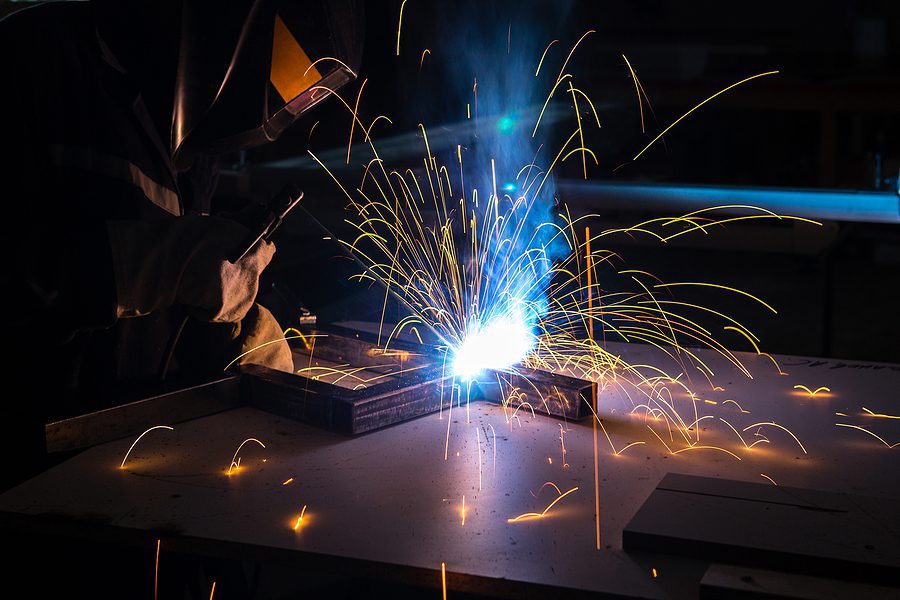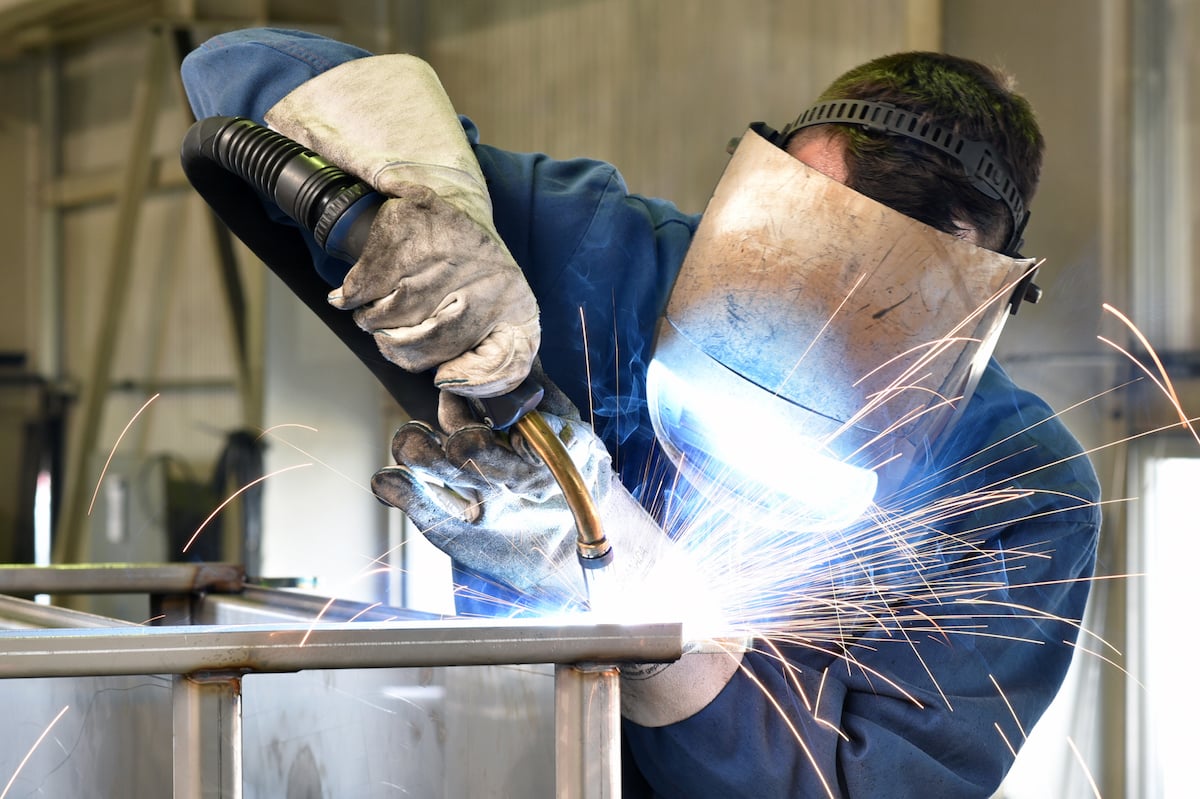Common Welding Fixing Issues and Exactly How to Address Them Properly
Welding repairs commonly run into a variety of concerns that can threaten the integrity of the end product. Typical issues include inadequate penetration, porosity, and imbalance, to name a few. Each issue provides special challenges that call for specific strategies for resolution. Recognizing these concerns is crucial for welders intending to improve their skills and outcomes. This discussion will explore these common welding repair issues and effective techniques to address them.
Inadequate Penetration
Insufficient penetration happens when the weld metal falls short to fully fuse with the base product, causing weak joints and possible architectural failures. This issue typically comes from not enough warm input, wrong electrode angle, or incorrect welding speed. Welders might experience insufficient penetration because of a miscalculation of the necessary criteria for a particular material thickness or kind. Additionally, contamination on the base product's surface can prevent reliable bonding, aggravating the problem. To deal with poor penetration, welders must guarantee ideal settings on their tools and preserve a tidy work surface. Normal evaluation of welds is advised to determine any kind of deficiencies early, enabling prompt modifications and the avoidance of endangered structural stability in bonded assemblies.
Porosity
Porosity is a typical issue in bonded joints that materializes as tiny gas bubbles entraped within the weld metal. This flaw can jeopardize the integrity of the weld, resulting in lowered stamina and prospective failure under anxiety. Montana Mobile Welding and Repair Belgrade Welding. Porosity usually occurs from contamination, wetness, or improper welding methods, which permit gases to escape into the liquified weld swimming pool. To attend to porosity, welders ought to ensure correct surface prep work, preserve a clean working setting, and utilize ideal welding parameters. Furthermore, picking the best filler material and protecting gas can reduce gas entrapment. Regular examination and screening of welds can aid recognize porosity early, guaranteeing timely corrective actions are taken, thereby protecting the quality and integrity of the bonded structure
Imbalance
Misalignment in welding can emerge from different variables, consisting of improper arrangement and thermal development. Understanding the origin is important for effective resolution. A number of improvement strategies are readily available to realign parts and assure architectural honesty.
Root causes of Imbalance
Welding misalignment usually comes from a range of underlying problems that can jeopardize structural stability. One key reason is incorrect fit-up of elements before welding, which can bring about gaps and unequal surface areas. Variants in thermal growth throughout the welding process can additionally lead to distortion, specifically if the materials being signed up with have various coefficients of growth. Additionally, insufficient securing and fixturing might fall short to hold components safely in position, bring about movement throughout welding. Improperly maintained devices, consisting of welding machines and tools, might introduce inconsistencies in the weld grain, additional adding to imbalance. Lastly, operator mistake, stemming from not enough training or experience, can also play a considerable function in developing misaligned welds.
Improvement Techniques Available
Attending to imbalance properly needs a mix of corrective methods customized to the specific concerns at hand. One common approach is using components or jigs to hold elements in the right setting during welding, making certain consistent placement. Furthermore, preheating the materials can help lower distortion and improve fit-up. For significant imbalance, mechanical realignment techniques, such as making use of hydraulic jacks or clamps, can be utilized to correct the setting before welding. Post-weld warm treatment might additionally be essential to alleviate anxieties brought on by misalignment. Ultimately, cautious assessment and adjustment during the arrangement stage can prevent imbalance concerns from ending up being significant problems, advertising a smoother welding procedure and improving total architectural honesty.
Distortion
Distortion is a common difficulty in welding that can arise from different elements, consisting of irregular cooling and heating. Recognizing the reasons for distortion is vital for carrying out reliable prevention techniques. Resolving this problem not just boosts architectural integrity but additionally boosts the total quality of the weld.
Reasons of Distortion
When based on the intense warm of welding, products typically go through changes that can bring about distortion. This sensation mainly develops from thermal development and tightening throughout the welding procedure. As the weld area warms up, the material expands; upon air conditioning, it contracts, which can develop interior stresses. On top of that, irregular heating throughout a work surface can exacerbate these stress and anxieties, resulting in bending or bending. The kind of product additionally plays a considerable duty; metals with varying thermal conductivity and coefficients of expansion may respond in a different way, resulting in uncertain distortions. Bad joint design and poor fixturing can contribute to imbalance throughout welding, increasing the probability of distortion. Comprehending these causes is vital for effective welding repair service and avoidance approaches.
Avoidance Techniques
Effective avoidance methods for distortion throughout welding focus on regulating warmth input and guaranteeing correct joint design. Keeping a regular heat input aids to reduce thermal expansion and tightening, which can lead to distortion. Using techniques such as preheating the workpiece can likewise reduce the temperature level gradient, promoting uniform home heating. In addition, choosing proper joint layouts, such as T-joints or lap joints, can enhance security and lower stress and anxiety concentrations. Implementing correct fixturing to safeguard the work surfaces in position further aids in keeping placement throughout the welding procedure. Staggered welding sequences can distribute heat a lot more evenly, preventing localized distortion. By using these methods, welders can substantially reduce the probability of distortion and boost the general quality of their welds.
Cracking
Splitting is a typical issue experienced in welding repair work, usually resulting from various elements such as incorrect cooling prices, product option, or inadequate joint prep work. The event of fractures can greatly compromise the stability of the weld, leading to prospective failings during operation. To address this concern, welders have to first examine the root causes, making certain that materials work and appropriately selected for the particular application. In addition, regulating the air conditioning rate throughout the welding process is essential; quick air conditioning can induce anxiety and bring about cracking. Correct joint layout and preparation also add to decreasing the threat. Implementing these methods can boost weld top quality and sturdiness, a knockout post inevitably minimizing the likelihood of splitting in finished weldments.

Insufficient Blend
A substantial concern in welding fixings is incomplete combination, which happens when the weld steel does not sufficiently bond with the base material or previous weld passes - Fabrication. This defect can lead to weak points in the joint, potentially jeopardizing the stability of the welded framework. Factors adding to incomplete blend include not enough heat input, inappropriate welding strategy, and contamination of the surface areas being signed up with. To resolve this issue properly, welders ought to assure correct pre-weld cleansing and surface preparation, along with readjust their welding specifications to attain adequate penetration and fusion. Regular inspection throughout the welding process can also aid identify insufficient fusion early, permitting prompt rehabilitative actions to improve the overall top quality of the weld
Overheating
While welding fixings can boost architectural integrity, overheating presents a substantial challenge that can cause material degradation. Excessive warmth throughout welding can alter the mechanical properties of metals, resulting in decreased stamina, enhanced brittleness, and bending. This phenomenon is specifically vital in high-stress applications where structural integrity is paramount. Identifying getting too hot can include aesthetic evaluations for discoloration or distortion, as well as checking temperature level during the welding procedure. To reduce the threats connected with getting too hot, welders should use ideal techniques, such as controlling warmth input, readjusting traveling rate, and making use why not try this out of appropriate filler materials. In addition, implementing pre- and post-weld warmth therapies can aid bring back material residential or commercial properties and improve the overall quality of the fixing, making sure long-term performance and security.
Often Asked Questions
What Are the Usual Indicators of a Welding Issue?

How Can I Check My Welds for Quality?
To examine welds for top quality, one can utilize visual evaluations, ultrasonic screening, and radiographic methods. Each strategy assures structural integrity, recognizes issues, and validates adherence to defined criteria, eventually improving the dependability of the bonded joints.
What Safety and security Safety Measures Should I Take While Welding?
When welding, one should focus on safety and security by putting on suitable individual safety equipment, guaranteeing correct air flow, securing combustible products away, keeping a tidy work space, and knowing surroundings to avoid injuries and accidents.
Can I Repair a Weld Without Remodeling the Entire Joint?
Fixing a weld without renovating the whole joint is possible, depending on the damages (Montana Mobile Welding and Repair). Strategies such as grinding, adding filler product, or using a welding process can efficiently resolve details defects while protecting the bordering structure
What Equipment Are Crucial for Reliable Welding Services?
Necessary tools for efficient welding repairs consist of a welding device, cord brush, grinder, protective gear, clamps, and filler materials. Each tool plays a vital duty in making certain high quality and safety and security during the fixing procedure. Porosity commonly arises from contamination, wetness, or incorrect welding methods, which enable gases to leave right More Help into the molten weld swimming pool. Poorly kept equipment, including welding makers and devices, may introduce disparities in the weld grain, more adding to misalignment. When subjected to the extreme heat of welding, materials usually undergo modifications that can lead to distortion. Cracking is a common problem run into in welding repairs, typically resulting from numerous variables such as improper cooling rates, product selection, or poor joint preparation. A substantial problem in welding repairs is incomplete fusion, which occurs when the weld metal does not properly bond with the base material or previous weld passes.